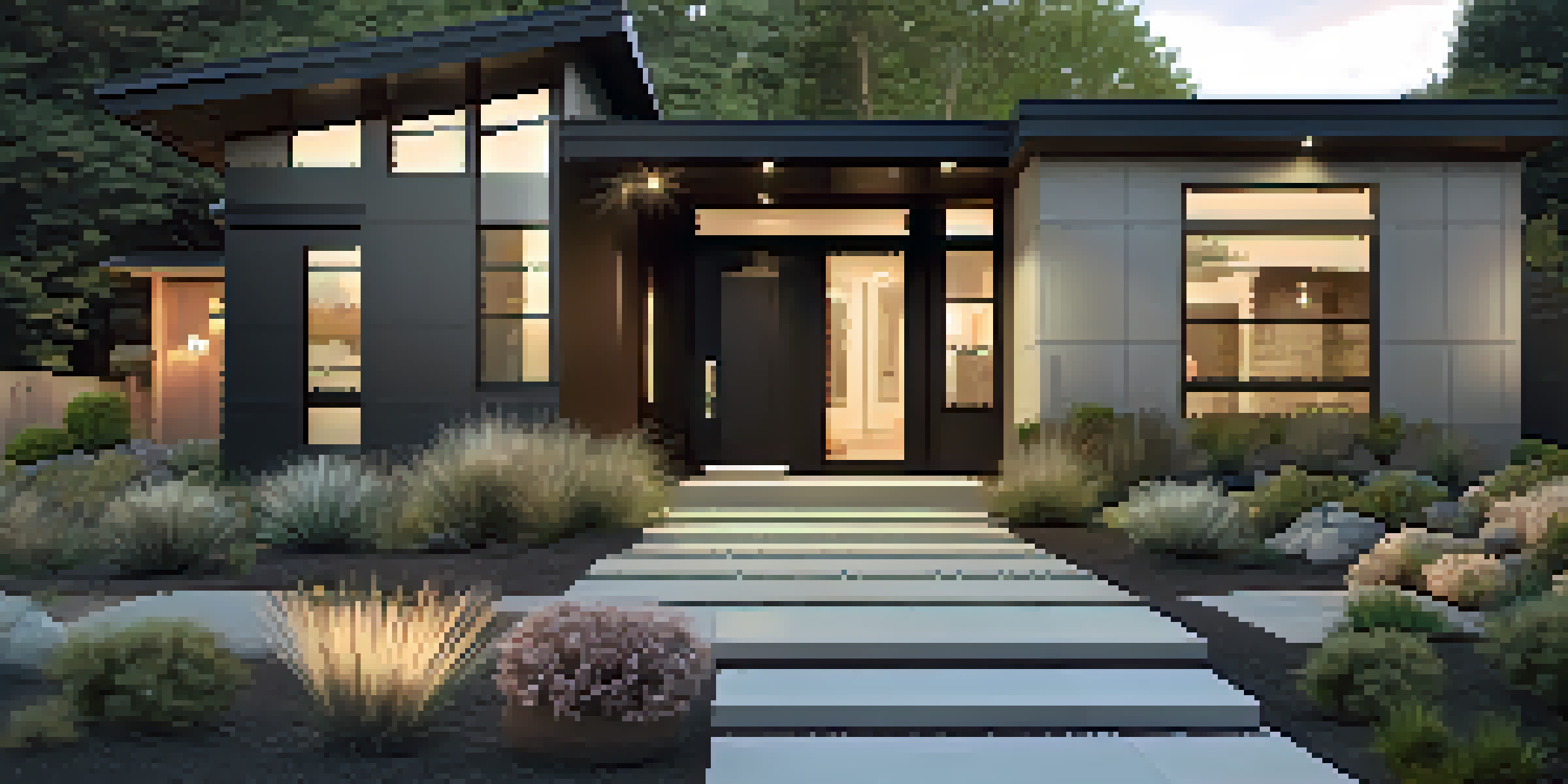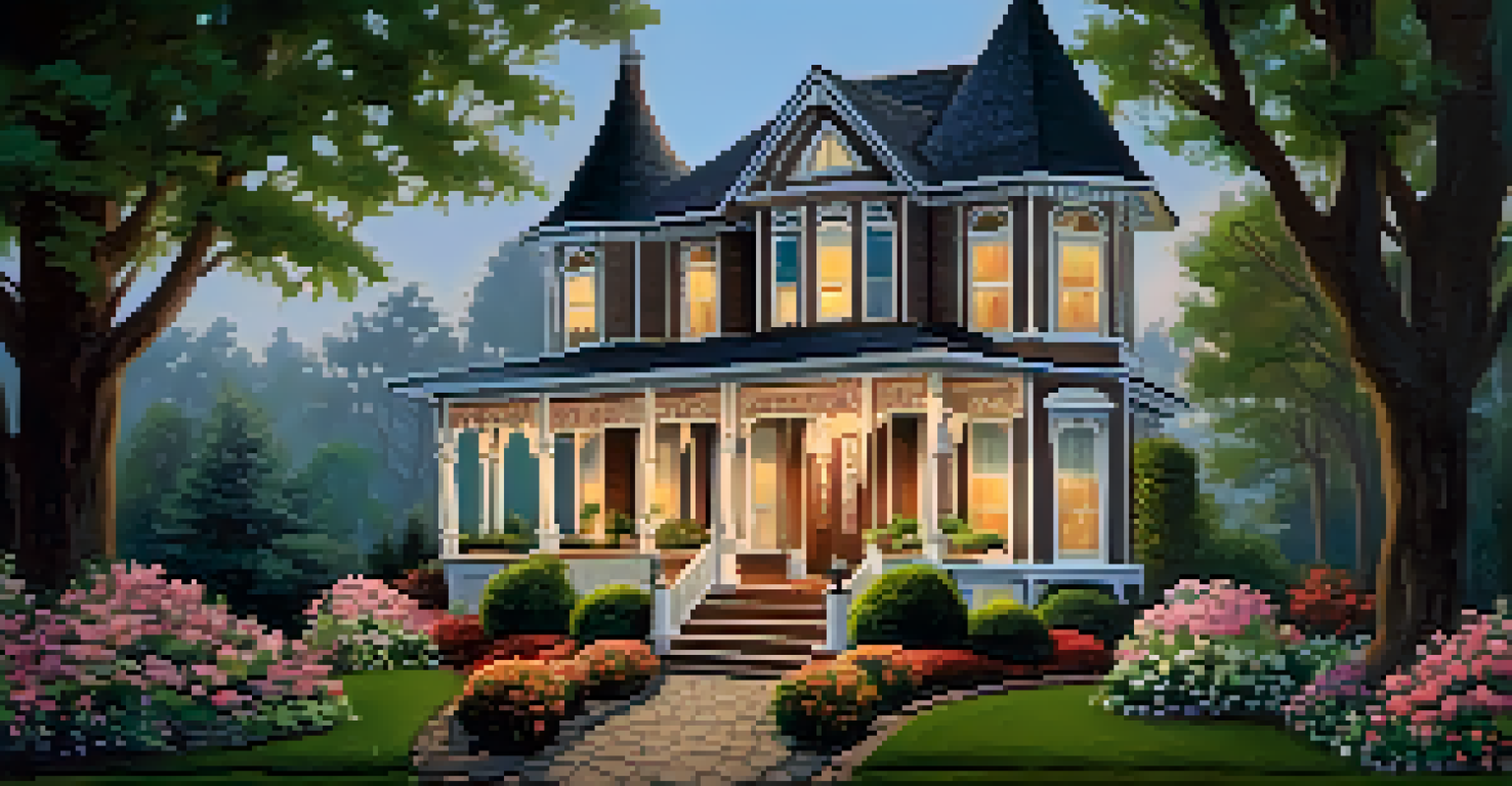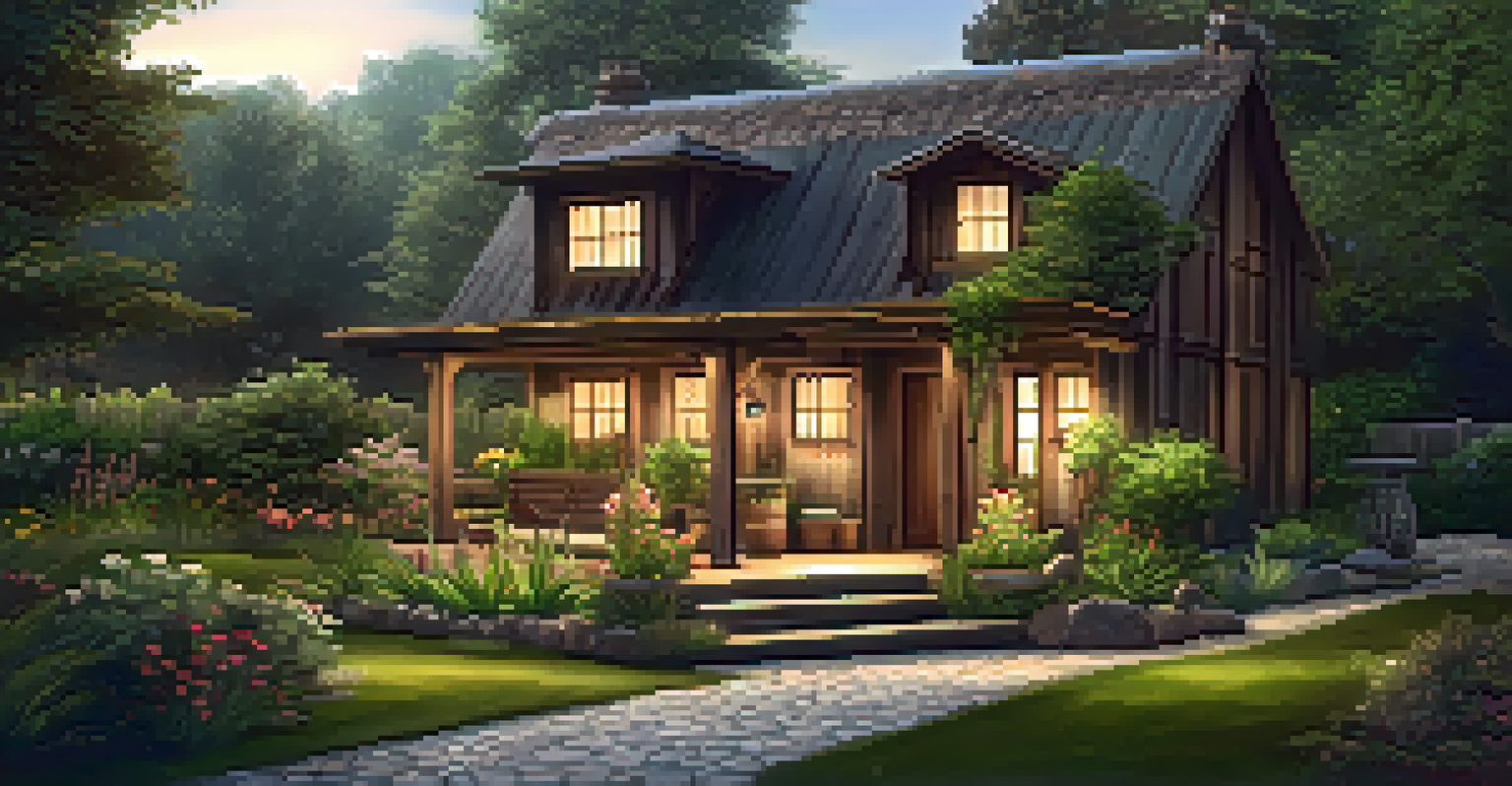Creating a Cohesive Exterior Design for Your Property

Understanding the Importance of Exterior Design
Exterior design is more than just aesthetics; it sets the tone for your entire property. Think of it as the cover of a book—it’s what draws people in and creates a first impression. A cohesive exterior not only enhances curb appeal but also reflects your personal style and values.
The details are not the details. They make the design.
When your property exudes a unified look, it tends to create a welcoming atmosphere. Neighbors and visitors alike will feel more at home and engaged. This sense of community can be further fostered by elements such as color schemes, materials, and landscaping that harmonize with each other.
Moreover, a well-thought-out exterior design can increase the overall value of your property. Potential buyers are often drawn to homes that present a cohesive and inviting appearance, making it easier to sell in the future. Thus, investing time and effort into your exterior can pay off in more ways than one.
Choosing a Color Palette that Unifies
Selecting a color palette is a crucial step in achieving a cohesive exterior design. Consider colors that complement each other and fit the style of your property, whether it be modern, traditional, or something in between. A harmonious color scheme can create a sense of flow from one element of your property to another.

For example, if your home is painted in soft earth tones, you might choose a darker shade for the front door to create a striking focal point. This not only adds interest but also maintains the overall aesthetic. Additionally, it's important to consider the surrounding environment; colors that blend with nature can enhance your property’s appeal.
Cohesive Design Boosts Appeal
A unified exterior enhances curb appeal and reflects personal style, creating a welcoming atmosphere.
Don’t shy away from using accent colors! They can be sprinkled throughout your exterior design—think window shutters, planters, or outdoor furniture. These little pops of color can tie together your overall look and make your property feel more inviting.
Incorporating Architectural Elements
Architectural elements, such as columns, railings, and rooflines, play a significant role in creating a cohesive exterior design. These features add character and can help define the style of your property. For instance, a Victorian home may benefit from intricate gingerbread trim, while a contemporary house might look best with clean, minimal lines.
Design is not just what it looks like and feels like. Design is how it works.
It's essential to choose architectural details that resonate with the overall theme of your home. Avoid mixing styles that clash, as this can confuse the eye and detract from the overall cohesiveness. Instead, aim for elements that enhance and support your property’s existing features.
Additionally, consider the scale and proportion of these elements in relation to your property. Oversized features may overwhelm a smaller home, while tiny details can get lost on a grand structure. Finding the right balance is key to achieving an inviting and harmonious exterior.
Landscaping: The Finishing Touch
Landscaping is often the final piece of the puzzle when it comes to exterior design. Thoughtfully chosen plants, trees, and shrubs can enhance your property’s visual appeal while also complementing its architectural style. For example, native plants can blend seamlessly with the surrounding environment, creating a natural and cohesive look.
Moreover, landscaping can help tie together different elements of your exterior design. Using similar colors and textures in your plant choices can create a unified appearance. For instance, if your home features warm wood tones, consider incorporating plants with similar hues for a consistent feel.
Thoughtful Color Palettes Matter
Choosing a harmonious color scheme ties together your property's elements and enhances its overall aesthetic.
Don’t forget about hardscaping! Pathways, patios, and decks made from materials that match or complement your home can further solidify your design. Well-planned outdoor spaces encourage functionality and enjoyment, making your property feel complete.
Lighting: Enhancing Your Design at Night
Lighting is an often-overlooked aspect of exterior design, yet it can dramatically elevate your property’s appearance, especially at night. Thoughtful lighting can highlight architectural features, create ambiance, and improve safety. For instance, soft pathway lights can guide guests while adding a touch of elegance.
When selecting outdoor lighting, consider fixtures that match your property’s style. Whether you choose modern sconces or vintage lanterns, consistency is key. This ensures that all elements of your design work together rather than compete for attention.
Additionally, strategic placement of lighting can enhance your landscaping. Uplights can illuminate trees or shrubs, making them stand out, while downlights can create a warm glow around entertaining areas. This not only beautifies your property but also extends the usability of outdoor spaces into the evening hours.
Choosing the Right Materials for Durability
The materials you choose for your exterior design can significantly impact both aesthetics and longevity. Opting for durable materials can ensure that your property looks great for years to come while also standing up to the elements. For instance, materials like stone or brick can add a timeless quality to your home’s exterior.
It’s also important to select materials that align with your chosen style. A modern home might benefit from sleek metal finishes, while a rustic cottage could shine with reclaimed wood. The key is to ensure that all materials work harmoniously together.
Personal Touches Add Character
Incorporating unique elements into your exterior design fosters individuality while maintaining a cohesive look.
Moreover, consider maintenance requirements when selecting materials. Some may require regular upkeep, while others are more low-maintenance. Choosing materials that are not only beautiful but also practical can lead to long-term satisfaction with your design.
Personal Touches: Adding Character to Your Property
Incorporating personal touches into your exterior design can make your property feel unique and inviting. This might include custom art pieces, decorative house numbers, or even a beloved garden statue. These elements reflect your personality and can create a warm, welcoming atmosphere.
Consider also the practical aspects of personalizing your space; a well-placed bench or swing can create an inviting outdoor nook. Meanwhile, unique planters or colorful outdoor furnishings can infuse your personality into your landscaping design.

Remember, these personal touches should still align with your overall design theme. The goal is to create a cohesive look while allowing your individuality to shine through. After all, your home is a reflection of you, and it should feel like a true extension of your personal style.